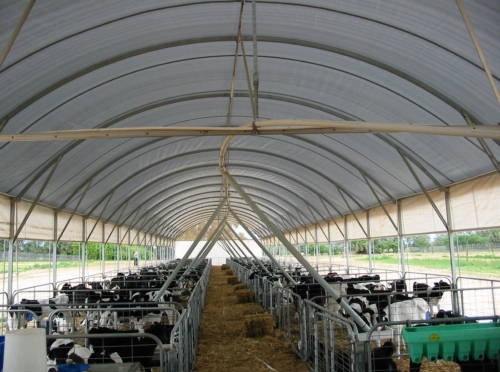
Some dairy farms in the Taupo Napier hill areas have been severely hit with snow, but reports show that all farms now have portable electricity and are able to milk cows but some dumping of milk did occur.
Calving has now commenced in the south and with good forecasting most farmers were well prepared with feed, shelter and supplementary feed to compensate for the cold.
Rain totals in Canterbury were variable and nowhere near enough to reverse the dire predictions for the provinces groundwater supplies.
Many springs and streams have dried up and authorities are suggesting little surface water irrigation will be allowed this year, and groundwater wells could be unreliable unless it is a very wet spring and summer.
The rest of the country has suffered from wet conditions and careful grass management is needed to ensure pugging does not affect future grass production.
Saleyards report strong demand for bobby calves especially if they have some beef genes, as shortages of store stock have narrowed the options for traders.
Fonterra have made changes to the milk price manual that will add 4-5c/kg ms to the milk price, but analysts predict that farmers may have to wait until 2018 until profits return to their sector.
The latest milk auction returned prices that were a high for 2016 with a 6.6% rise, and whole milk powders lifted nearly 10%, and pleasingly there was no negative reaction to the currency.
This lift followed a rise from the dairy milk futures marke,t and further trades this week indicate more rises coul;d be due at the auction next week.
Analysts now report that the slowing of milk production is influencing customers decisions, and Fonterra's large volumes of spring dairy products will be looking for higher prices so the payout can lift.
Dairy NZ reports farmers have made good progress reducing their costs, with farm working expenses now averaging $3.55, and as a result the breakeven figure has lowered to $5.05/kg ms.
Cull replacement heifers are still being traded at the saleyards as farmers look for cashflow, and a shipment of in calf export heifers are loaded for China at the port of Timaru.
New leadership is being looked for at Tatua as their Chief Executive is standing down after 9 years at the helm, leaving the company in great shape and they should have no trouble attracting a new CEO for the future.
Dairy prices
Select chart tabs
3 Comments
Now a little compare and contrast
Check out the silver tongued spokesman explaining why farmers in UK need wait for any increase in milk price.
from 7:35 onward
http://www.bbc.co.uk/programmes/b07mvxs0
and their reason for a co-op.
because otherwise you would have a middleman taking a cut.
ours too.
So we have been scrap booking and found a few from earlier on
In an interview, Andrew Ferrier, Fonterra chief executive, tells the Financial Times that China, Brazil and India – countries where the company has either established farms or hopes to soon – are particularly promising.
“There will be huge demand for locally produced milk,” he says.
Mr Ferrier estimates that China’s dairy market, for example, will rise from about $25bn today to $72bn by the end of this decade. He says that while Chinese dairy imports are increasing, they are not keeping pace with rising demand, and Fonterra wants to help fill the gap.
In China, as in other emerging markets, rising incomes and growing populations are fuelling demand for dairy produce. Fonterra is responding by setting up its own farms in China, partly because it does not have the capacity to grow at home. It has a 5,500-cow farm in the northern province of Hebei that produces 25m litres of milk a year, and is developing a second farm in the region.
https://www.ft.com/content/9b2c1f2c-8a08-11e0-beff-00144feab49a
now who said four more years?
referred to by these Australians (page 6).
http://www.asx.com.au/asxpdf/20160729/pdf/438xjhslj5gzyz.pdf
and page 9 shows how they can drop a cool $2.5m yr to yr.
Nothing like finding out how others view us.
From the readers write section, amongst discussing the mess that is MG.
Rod - MG is largely owned by farmers and they have representatives on the board who make high level decisions. The actual business is run on a day to day level by a very top heavy management structure and people with no exposure to farming.
fonterra is largely owned by NZ Dairy Farmers and if you think that MG has screwed its farmers it's nothing to what Fonterra has done to the poor NZ guys whose industry suffers badly from property speculation. Price paid to NZ farmers is much worse and Fonterra is pretty much a Monopoly player there.
http://www.smh.com.au/federal-politics/political-news/barnaby-joyce-cal…




We welcome your comments below. If you are not already registered, please register to comment.
Remember we welcome robust, respectful and insightful debate. We don't welcome abusive or defamatory comments and will de-register those repeatedly making such comments. Our current comment policy is here.